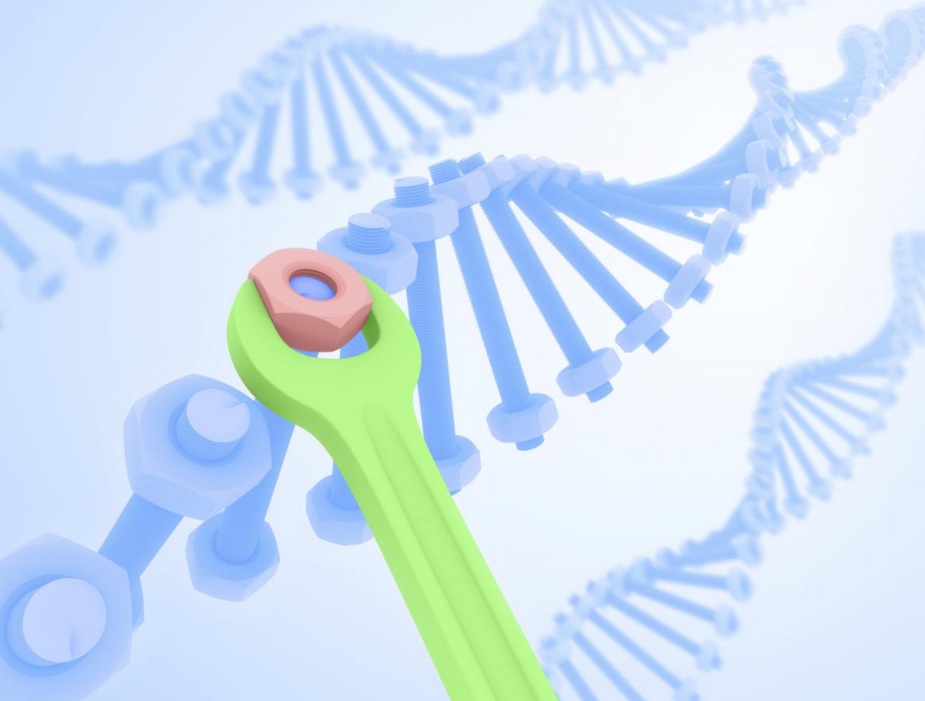Advertisement
'Heroes Of CRISPR': Vivid Yarn And Lessons Learned From A Scientific Leap Ahead

It's being billed as biotech's Battle Royale, an East Coast-West Coast conflict over stakes that may amount to hundreds of millions of dollars, playing out in the arcane arena of U.S. patent law.
For the story on the legal fight that kicked into full gear this week, you can read the Washington Post's Carolyn Johnson: Control of CRISPR, Biotech's Most Promising Breakthrough, Is In Dispute.
Everybody loves a good fight, but the import of CRISPR for humankind is not the conflict or the money. It's that this new gene-editing technology is indisputably transforming biological research around the world, speeding up discoveries in areas from cancer to crop science.
"Medical breakthroughs often emerge from completely unpredictable origins."
Eric Lander
So what are the roots of this bio-revolution? And what can we learn from how it was discovered? Eric Lander explores the CRISPR backstory in a vivid scientific yarn just out in the journal Cell, available free online for the next two weeks.
Lander co-led the Human Genome Project and is now the director of the Cambridge-based genomics giant The Broad Institute, which is involved in the CRISPR patent dispute. He's also a leading science storyteller, from popular MIT lectures on introductory biology to surely one of the most riveting episodes of The Moth ever made.
The Broad's rivals in the patent dispute may have different versions of specific chapters (Update, 1/26: Understatement! The article unleashed a major backlash online) but Lander also draws general lessons from the CRISPR back-story:
The most important is that medical breakthroughs often emerge from completely unpredictable origins. The early heroes of CRISPR were not on a quest to edit the human genome — or even to study human disease. Their motivations were a mix of personal curiosity (to understand bizarre repeat sequences in salt-tolerant microbes), military exigency (to defend against biological warfare), and industrial application (to improve yogurt production).
The history also illustrates the growing role in biology of “hypothesis-free” discovery based on big data. The discovery of the CRISPR loci, their biological function, and the tracrRNA all emerged not from wet-bench experiments but from open-ended bioinformatic exploration of large-scale, often public, genomic datasets. “Hypothesis-driven” science of course remains essential, but the 21st century will see an increasing partnership between these two approaches.
It is instructive that so many of the Heroes of CRISPR did their seminal work near the very start of their scientific careers (including Mojica, Horvath, Marraffini, Charpentier, Vogel, and Zhang)—in several cases, before the age of 30. With youth often comes a willingness to take risks—on uncharted directions and seemingly obscure questions—and a drive to succeed. It’s an important reminder at a time that the median age for first grants from the NIH has crept up to 42.
Notably, too, many did their landmark work in places that some might regard as off the beaten path of science (Alicante, Spain; France’s Ministry of Defense; Danisco’s corporate labs; and Vilnius, Lithuania). And, their seminal papers were often rejected by leading journals—appearing only after considerable delay and in less prominent venues. These observations may not be a coincidence: the settings may have afforded greater freedom to pursue less trendy topics but less support about how to overcome skepticism by journals and reviewers.
Finally, the narrative underscores that scientific breakthroughs are rarely eureka moments. They are typically ensemble acts, played out over a decade or more, in which the cast becomes part of something greater than what any one of them could do alone. It’s a wonderful lesson for the general public, as well as for a young person contemplating a life in science.
Readers, reactions?
